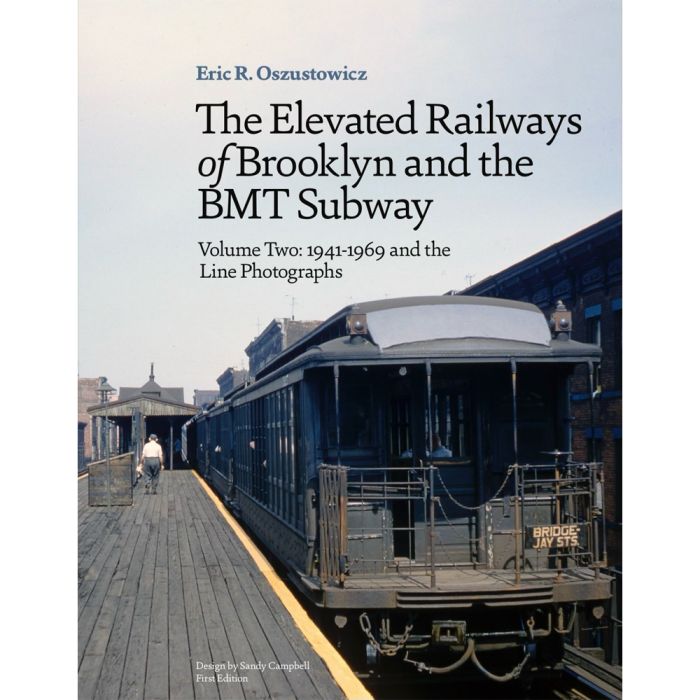
Vol 2 The Elevated Railways of Brooklyn and the BMT Subway Book
The period from 1940 through 1969 would see rapid transit in Brooklyn undergo a massive transformation. The oldest of the elevated lines would disappear. No longer would the sound of rumbling elevated trains echo throughout downtown Brooklyn, but without the prior existence of these elevated lines, Brooklyn could not have possibly grown as fast as it did.
During the late 1800s there was no other way of moving the masses. Trolleys could not handle the sheer numbers of people who wanted to travel. The BMT's elevated lines traveled only as far as Park Row via downtown Brooklyn. The Brooklyn Bridge was at capacity, so new subway lines were the only solution.
As the subway lines were built that provided destinations preferred by
passengers, the elevated structures that couldn't support steel cars were
eventually removed. Also, by 1969, the original BMT subway cars had been
replaced with modern cars. This Volume documents the transition.
Design by Sandy Campbell
First Edition
In stock
Description / Vol 2 The Elevated Railways of Brooklyn and the BMT Subway Book
The period from 1940 through 1969 would see rapid transit in Brooklyn undergo a massive transformation. The oldest of the elevated lines would disappear. No longer would the sound of rumbling elevated trains echo throughout downtown Brooklyn, but without the prior existence of these elevated lines, Brooklyn could not have possibly grown as fast as it did.
During the late 1800s there was no other way of moving the masses. Trolleys could not handle the sheer numbers of people who wanted to travel. The BMT's elevated lines traveled only as far as Park Row via downtown Brooklyn. The Brooklyn Bridge was at capacity, so new subway lines were the only solution.
As the subway lines were built that provided destinations preferred by
passengers, the elevated structures that couldn't support steel cars were
eventually removed. Also, by 1969, the original BMT subway cars had been
replaced with modern cars. This Volume documents the transition.
Design by Sandy Campbell
First Edition